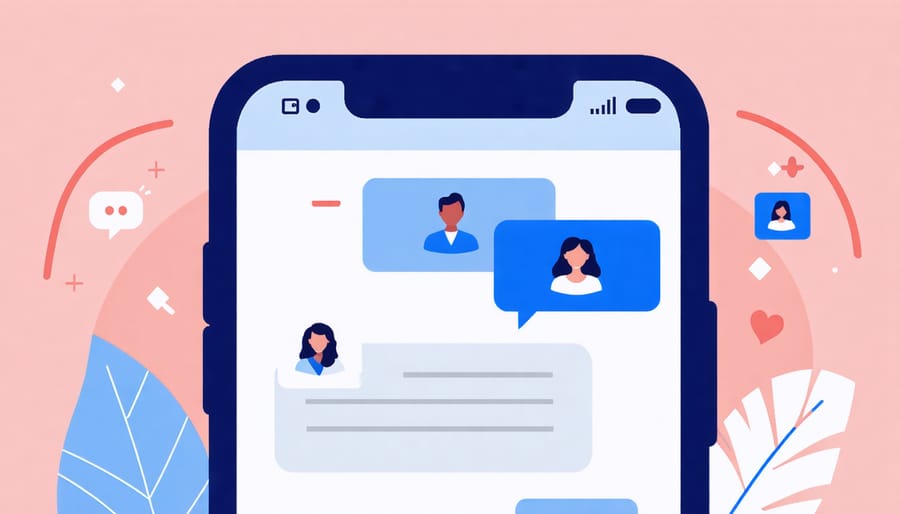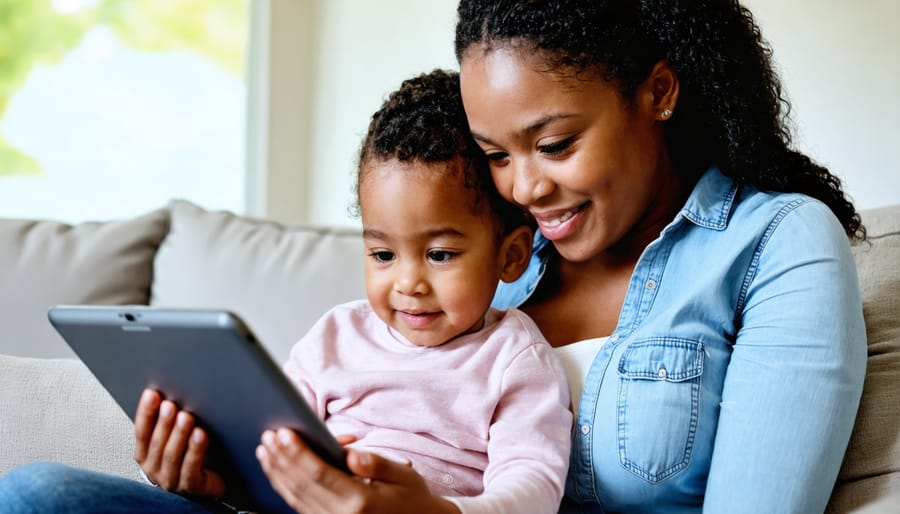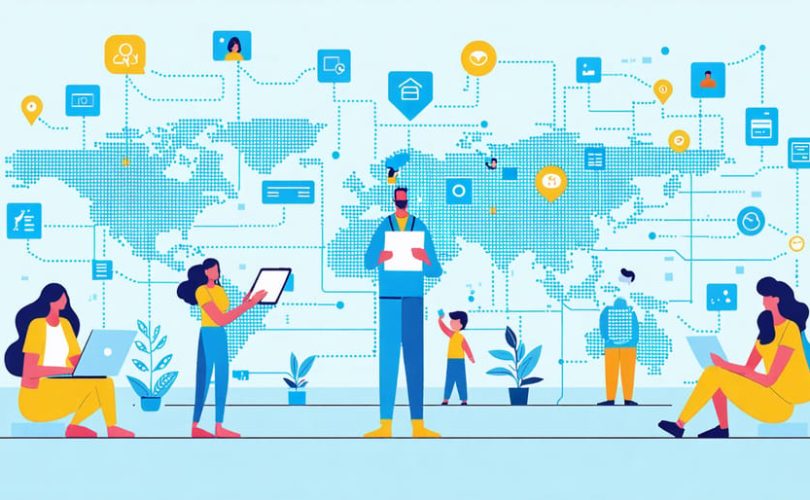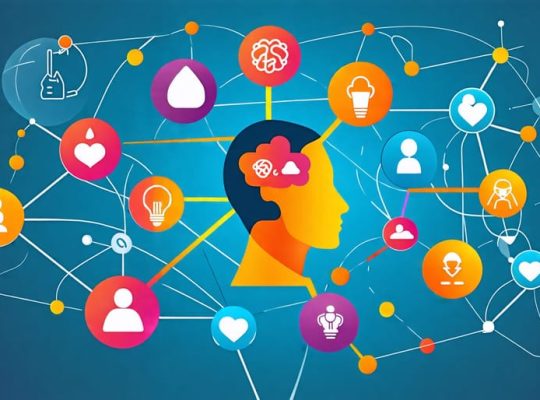Transform your child’s mental health journey through modern digital collaboration tools that connect parents, teachers, and healthcare providers like never before. Today’s secure platforms and mobile apps create a unified support network, ensuring everyone stays informed and aligned in supporting young minds.
Digital collaboration has revolutionized how we coordinate children’s mental health care, replacing fragmented communication with seamless information sharing and real-time updates. From secure messaging systems that enable quick consultations between therapists and teachers, to shared progress tracking platforms that keep parents informed, these tools strengthen the circle of care around each child.
The right digital tools don’t just improve communication—they enhance treatment outcomes by ensuring consistent support across all environments where children learn, play, and grow. Whether it’s coordinating medication schedules, sharing behavioral observations, or maintaining treatment plans, these platforms help create a more responsive and effective support system.
This comprehensive guide explores the most effective digital collaboration tools available today, offering practical implementation strategies and real-world examples of how these technologies are transforming children’s mental health care. Discover how to build a more connected, coordinated approach to supporting your child’s emotional wellbeing.
Why Digital Collaboration Matters in Children’s Mental Health

Building Better Care Teams
Digital technology has revolutionized how collaborative care teams work together to support children’s mental health. Secure messaging platforms now enable therapists, psychiatrists, teachers, and parents to share updates and concerns in real-time, ensuring everyone stays informed about a child’s progress.
Dr. Sarah Chen, a child psychiatrist, shares, “When we use digital tools effectively, it’s like having the whole care team in one room. Parents can quickly message teachers about behavioral changes, while I can provide immediate guidance to therapists about medication adjustments.”
Cloud-based care management platforms allow team members to access treatment plans, progress notes, and behavioral assessments from anywhere. This seamless information sharing helps identify patterns and adjust interventions more quickly. Calendar integration features also make it easier to coordinate appointments and team meetings, reducing scheduling conflicts and ensuring consistent care.
Many platforms now include parent portals where families can securely message providers, track their child’s progress, and access educational resources. This enhanced connectivity helps parents feel more engaged and supported in their child’s treatment journey.
Ensuring Consistent Care
Digital collaboration tools have revolutionized how cross-disciplinary teams deliver consistent care to children. When therapists, psychiatrists, teachers, and family counselors share a unified digital platform, they can maintain detailed records of a child’s progress, treatment plans, and important observations in real-time.
Consider Sarah’s story: her occupational therapist noticed improvements in sensory processing during morning sessions, while her speech therapist documented better communication skills in the afternoon. Through shared digital documentation, both providers could align their approaches and build on each other’s successes.
Digital treatment tracking also helps prevent miscommunication and ensures that all care providers follow the same therapeutic strategies. When a child’s psychiatrist adjusts medication, for instance, teachers and counselors can monitor and document any behavioral changes, creating a comprehensive picture of the child’s response to treatment.
Additionally, these tools enable providers to quickly identify patterns, track milestone achievements, and adjust treatment plans based on collective observations. This coordinated approach leads to more effective, personalized care that better serves each child’s unique needs.
Essential Digital Collaboration Tools
Secure Communication Platforms
In today’s digital age, protecting sensitive information about children’s mental health is paramount. Several secure communication platforms offer HIPAA-compliant solutions that enable safe and confidential collaboration between healthcare providers, educators, and families.
Popular video conferencing platforms like Zoom Healthcare and Doxy.me provide encrypted, secure environments for virtual therapy sessions and team meetings. These platforms offer features specifically designed for healthcare settings, including virtual waiting rooms and screen sharing capabilities for reviewing therapeutic materials.
For day-to-day messaging and quick consultations, platforms like TigerConnect and Spruce Health allow professionals to exchange confidential information safely. These tools enable secure file sharing, group messaging, and emergency alerts while maintaining strict privacy standards.
When selecting a secure communication platform, consider features like:
– End-to-end encryption
– Password protection and two-factor authentication
– Automatic session timeouts
– Audit trails for compliance tracking
– Mobile accessibility for on-the-go communication
Dr. Sarah Chen, a child psychiatrist, shares, “Using secure platforms gives my patients’ families peace of mind. They know their children’s information is protected, which helps build trust and enables more open communication about sensitive topics.”
Remember to train all team members on proper usage of these platforms and regularly review security protocols. This ensures everyone maintains the highest standards of confidentiality while collaborating effectively on children’s care.

Treatment Planning Software
Modern treatment planning software has revolutionized how mental health care teams collaborate in supporting children’s wellbeing. These digital platforms enable therapists, psychiatrists, teachers, and family members to work together seamlessly within established collaborative care models.
Popular platforms like TherapyNotes and SimplePractice offer user-friendly interfaces where care team members can create, update, and share treatment plans in real-time. Dr. Sarah Chen, a child psychiatrist, shares, “These tools have transformed how we coordinate care. We can now easily track progress, adjust goals, and ensure everyone is aligned with the treatment approach.”
Key features typically include:
– Customizable treatment plan templates
– Goal tracking and progress monitoring
– Secure messaging between team members
– Parent portal access for family involvement
– Integration with electronic health records
– Mobile accessibility for on-the-go updates
“Having everything in one place makes it easier for parents like me to stay involved,” explains Maria Rodriguez, whose 10-year-old son receives mental health support. “I can see his progress, communicate with his care team, and feel more connected to his treatment journey.”
When choosing treatment planning software, look for platforms that prioritize security, offer intuitive interfaces, and provide good technical support. Many solutions offer free trials, allowing teams to find the best fit for their needs.
Progress Tracking Applications
Progress tracking applications have revolutionized how we monitor and share children’s mental health developments. These user-friendly digital tools help create a more connected care experience, allowing parents, teachers, and healthcare providers to stay informed about a child’s journey.
Popular tracking apps offer features like mood journals, behavior logs, and milestone tracking, making it easier to spot patterns and celebrate progress. For example, many parents have found success using apps that let children express their emotions through interactive emoji selections or simple check-ins, making the process engaging and less intimidating.
“Digital tracking tools have transformed how we collaborate with families,” shares Dr. Sarah Chen, a child psychologist. “When parents can share real-time updates about their child’s behaviors and moods, we can provide more targeted and timely support.”
These applications often include:
– Daily mood and behavior tracking
– Medication reminder systems
– Progress charts and visual representations
– Secure messaging between care team members
– Goal-setting and achievement monitoring
– Custom report generation for therapy sessions
Many platforms also offer family-friendly features like positive reinforcement systems and achievement badges, helping children feel more engaged in their wellness journey. Some apps even incorporate game-like elements that make progress tracking feel more like a rewarding activity than a medical task.
Remember to choose apps that prioritize data privacy and security, especially when sharing sensitive information about children’s mental health.
Making Digital Collaboration Work
Setting Up Your Digital Toolkit
Creating a digital toolkit for collaboration in children’s mental health care doesn’t have to be overwhelming. Start by identifying your core needs – typically, these include secure communication, document sharing, and scheduling capabilities. Many mental health professionals find success with a combination of three to four essential tools rather than trying to implement everything at once.
Begin with a HIPAA-compliant messaging platform that allows secure communication between team members, parents, and other caregivers. Make sure all users receive proper training on privacy features and basic functionality. Next, implement a shared calendar system that helps coordinate appointments and team meetings while respecting everyone’s schedules.
For document sharing and collaborative care plans, choose a secure platform that allows real-time editing and easy access for authorized team members. Remember to establish clear protocols for document organization and naming conventions to keep everything easily searchable.
Dr. Sarah Chen, a child psychiatrist, shares: “When setting up digital tools, I always emphasize starting small and scaling up gradually. This approach helps team members adjust and builds confidence in using new technology.”
Consider these practical steps for implementation:
– Schedule dedicated training sessions for all team members
– Create simple user guides with screenshots
– Designate “tech champions” who can help others
– Start with a pilot group before full rollout
– Regular check-ins to address concerns and share successes
Remember that successful implementation is about people first, technology second. Take time to listen to team members’ concerns and adjust your approach based on their feedback. This collaborative approach to setting up your digital toolkit helps ensure better adoption and long-term success.
Maintaining Privacy and Security
When collaborating digitally in children’s mental health care, protecting sensitive information must be our top priority. Every shared document, video call, or message contains confidential details about young patients and their families that we need to safeguard carefully.
Start by ensuring all team members understand and follow HIPAA guidelines and other relevant privacy regulations. Choose collaboration tools that offer strong encryption and comply with healthcare privacy standards. Many platforms now provide healthcare-specific versions with enhanced security features designed specifically for handling sensitive patient information.
Create clear protocols for sharing and storing information. This includes using strong passwords, enabling two-factor authentication, and regularly updating access permissions. Remember to log out of shared devices and secure any downloaded files.
When conducting virtual sessions or team meetings, use private, secure spaces where conversations can’t be overheard. Be mindful of what’s visible in your video background during calls, as it might inadvertently reveal confidential information.
Train all team members on proper data handling procedures, including how to securely share files and what information should never be transmitted through digital channels. Regular refresher training helps keep security awareness high and ensures everyone stays updated on the latest best practices.
Consider implementing role-based access controls, where team members only have access to the information they need for their specific roles. This minimizes the risk of unauthorized access while maintaining efficient collaboration.
Remember that maintaining privacy isn’t just about technical solutions – it’s about creating a culture of awareness and responsibility. Encourage open communication about security concerns and establish clear procedures for reporting potential breaches or vulnerabilities.

Supporting Parents Through Digital Tools
In today’s digital age, parents have unprecedented opportunities to actively participate in their children’s mental health care through various technological tools. These digital platforms bridge the gap between home and clinical settings, enabling more effective family-professional partnerships that benefit everyone involved.
Many parents are finding success with secure messaging apps that allow direct communication with their child’s care team. Sarah, a mother of two, shares how using these tools has transformed her experience: “Being able to quickly send updates or ask questions between sessions has made me feel more confident in supporting my children’s mental health journey.”
Digital tracking tools and mood journals help parents monitor their child’s progress and share detailed information with healthcare providers. These apps often include features for recording medication responses, behavioral patterns, and emotional well-being indicators. This data proves invaluable during consultations, allowing for more informed decisions about treatment approaches.
Video conferencing platforms have also become essential, especially for families in remote areas or those with busy schedules. These tools enable parents to participate in therapy sessions, team meetings, and support groups from home, making mental health care more accessible and convenient.
Parent portals integrated into healthcare systems provide secure access to treatment plans, upcoming appointments, and educational resources. These platforms often include features for completing assessments or questionnaires before appointments, making face-to-face time more productive.
To get started with digital tools, parents can:
– Ask their child’s care provider about recommended apps and platforms
– Ensure they understand privacy settings and data security measures
– Start with one tool and gradually incorporate others as needed
– Share feedback about what works best for their family
– Use reminders and notifications to stay engaged in the process
Remember, digital tools are meant to enhance, not replace, personal connections. They work best when used to support ongoing communication and collaboration between families and mental health professionals.
Digital collaboration tools have revolutionized how we support children’s mental health, making it easier than ever for parents, teachers, and healthcare providers to work together effectively. These tools not only streamline communication but also create a more coordinated and responsive support system for our young ones. By embracing these digital solutions, we can break down traditional barriers to collaboration, ensure timely interventions, and maintain consistent care approaches across different settings.
The benefits are clear: better information sharing, reduced response times, and improved outcomes for children. Whether you’re new to digital collaboration or looking to enhance your current practices, taking the first step toward implementing these tools can make a significant difference in the quality of care we provide. Remember, every small improvement in how we work together can have a lasting positive impact on a child’s well-being. Let’s embrace these digital solutions to create stronger, more connected support networks for the children who need them most.







